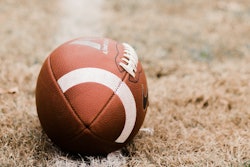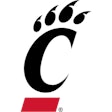![[Photo courtesy of AspenProjectPlay.org]](https://img.athleticbusiness.com/files/base/abmedia/all/image/2021/04/ab.safety521_feat.png?auto=format%2Ccompress&q=70&w=400)
Although every high school athletic director looks forward to the day when holding a high school practice or hosting a competition resembles the pre-COVID period, it is safe to say that some of the methodologies and practices used in conducting high school sports in 2020 are here to stay.
 Jay Hammes is president of Safe Sport Zone in Racine, Wis.
Jay Hammes is president of Safe Sport Zone in Racine, Wis.
In an era where they have been challenged to use the full range of their communication, organizational and logistical skills to offer programming to their student-athletes, athletics administrators have been afforded a unique opportunity to develop new skills, build their leadership capacities and reexamine their practices. In essence, the entire profession and its practices have been transformed.
Focus on fundamentals
In developing return-to-play plans for their schools, high school athletic directors throughout the United States relied upon a series of fundamental tools and processes to assess their surroundings, adapt their programs and mitigate the risk of coronavirus exposure. Among their approaches were:
 Gary Stevens is an athletics administrator at Thornton Academy in Saco, Maine.
Gary Stevens is an athletics administrator at Thornton Academy in Saco, Maine.
• Designing and implementing plans to daily sanitize all athletics facilities and equipment
• Emphasizing personal hygiene
• Using health questionnaires and applications to screen all participants in practices and competitions
• Monitoring and refining department processes and protocols
• Communicating regularly with school health and sports medicine personnel, including nurses, physicians and athletic trainers
Any athletics administrator who has had to manage an outbreak of staph infection or other skin disease in one or more of his or her programs has been faced with the task of being vigilant when it comes to making sure that student-athletes vigorously address their personal hygiene. Disinfecting equipment such as football pads, wrestling mats and personal gear has been a standard approach to "righting the ship" and addressing specific health concerns in those cases.
What is unique about COVID-19 is the scope and breadth of its impact. For the first time in history, those entrusted with leading education-based athletics have had to exercise extreme health measures for more than a few weeks or months and across their entire program. Locker rooms have been closed to student use. The sharing of water bottles, towels or other equipment has been prohibited. Sideline areas have been reimagined and constructed to enforce social distancing. Mask mandates have become commonplace.
The fundamentals underscoring the nation's response to the coronavirus are transferrable into the future. It can be expected that the presence of hand sanitizers on score tables and team benches could be a lasting aspect of the "new normal," as those products lessen people's exposure to pathogens other than COVID-19. The laundering of personal items and a stepped-up approach to cleaning locker room facilities — par for the course in 2020 — should receive an increased focus in the immediate future.
It has long been understood that school departments cannot operate independently in siloes or bailiwicks — a fact underscored by the COVID-19 experience. Regular, ongoing communication between athletic department leaders and school medical personnel, made necessarily during the era of contact tracing, may become enhanced as schools negotiate the next several months. These reforged partnerships are critical to managing a wide variety of future challenges.
![Face coverings became the rule for fans and competitors alike during 2020-21 high school sports seasons in many parts of the country, including Waterloo, Wis.[Photo by Sadye Ring]](https://img.athleticbusiness.com/files/base/abmedia/all/image/2021/04/ab.ss521a.png?auto=format%2Ccompress&fit=max&q=70&w=400) Face coverings became the rule for fans and competitors alike during 2020-21 high school sports seasons in many parts of the country, including Waterloo, Wis.[Photo by Sadye Ring]
Face coverings became the rule for fans and competitors alike during 2020-21 high school sports seasons in many parts of the country, including Waterloo, Wis.[Photo by Sadye Ring]
Protection in the collection
Jason Parker is an athletic administrator for Muskogee Public Schools in Oklahoma. A former basketball standout at NCAA Division I Tulsa University, Parker completed his law degree at the same institution and is one of the few doctors of jurisprudence within the ranks of the nation's high school athletic directors.
Parker has been a frequent presenter, speaker and author during the pandemic, providing his colleagues with advice for addressing legal issues connected with managing education-based athletics in these unique times.
One of the mantras that he professes is that "there is protection in the collection." In other words, schools that act in accordance with governmental directives, state association guidance, or conference or regional initiatives will find themselves more immune to litigation than in cases in which they "go rogue."
Parker's advice about the power of collective action is among the most important outcomes of the COVID-19 experience. Consortiums of schools that have worked collaboratively within leagues or across conference lines have found value in those relationships. Whether it is in the form of developing policies that apply to all participating schools or sharing resources, a renewed attention to a group ethic became the norm during the summer and fall of 2020.
In many cases, leagues or groups of schools have developed specific COVID-19 protocols for managing their athletic contests to a) ensure consistency from venue to venue and b) create a sense of familiarity and comfort as teams travel to other communities. For example, the Southwestern Maine Activities Association (SMAA), a conference of 17 of that state's largest high schools, assembled ad hoc committees prior to both the spring and winter seasons and tasked them with creating competition guidelines for league contests.
These documents included specific bullet points related to the minutiae of hosting interscholastic competition, such as:
• Health screening protocols for team personnel
• Requirements for wearing face coverings at game venues
• Procedures for managing the screening and needs of game-day event workers, including contest officials
• Transportation logistics, including drop-off and loading requirements
• Sideline management issues (bench areas, scorer's tables)
• Media services
• State mandates related to maximum gathering numbers for indoor or outdoor venues
• Athletic training services
• Auxiliary game details (public address announcements, national anthem, special events)
• Spectator management
Most schools in the SMAA have used these guidelines as a template for building event memoranda that are sent to visiting schools prior to hosting them for athletic contests. These documents communicate all expectations of the host school while sharing venue-based specifics that are critical to running a smooth operation on game day. Some schools even incorporate maps into their flyers to offer a visual depiction of the game-day experience.
Given that some states imposed indoor or outdoor gathering mandates that may limit or prohibit attendance at games, schools in the same conference or region of a state have also worked collectively to develop spectator policies. In some cases, conferences have banned spectators altogether. In others, schools have been able to sell limited numbers of tickets where state regulations permit. Athletic programs that may have historically competed for regional or state supremacy have learned the value of cooperation, consistency and open communication.
Despite the often emotional — and sometimes political — ramifications of these policies, one of the positive outcomes of game-day restrictions is an increase in the use of livestreaming or other live television services to deliver content to those unable to access games in person. Whether it was in the form of the Pixellot hardware available from the National Federation of State High School Associations (NFHS) and televising via the NFHS Network or increasing the use of previously installed technology, high schools utilized these services at an increased rate starting in the fall of 2020. Having acquired the means and taken advantage of the opportunity to transmit live games, many high schools are in a position to expand these services in the future.
The COVID-19 era has also caused schools to reexamine the nature of scheduling. State and local health guidelines (and transportation constraints) have fostered a new paradigm for conducting competition. Rather than remain attached to conference affiliations or other scheduling formulas that restrict who they can play, many schools have adopted a regional approach. High schools in neighboring communities, regardless of classification, have played one another in a number of different activities during the pandemic. In addition to establishing new relationships between schools, coaches and athletic directors, this approach may be a harbinger of things to come. School districts that may have once been hesitant to compete against one another for historical or competitive reasons may be more willing to use "outside the box" thinking when building their schedules.
![Attendance restrictions led to increased adoption of live-streaming services, potentially exposing high school sports to new and broader audiences moving forward. [Photo by Sadye Ring]](https://img.athleticbusiness.com/files/base/abmedia/all/image/2021/04/ab.ss521b.png?auto=format%2Ccompress&fit=max&q=70&w=400) Attendance restrictions led to increased adoption of live-streaming services, potentially exposing high school sports to new and broader audiences moving forward. [Photo by Sadye Ring]
Attendance restrictions led to increased adoption of live-streaming services, potentially exposing high school sports to new and broader audiences moving forward. [Photo by Sadye Ring]
Innovations in game management
An old saw proclaims that "every cloud has a silver lining." Twentieth-century British theologian J. Sidlow Baxter articulated this point more specifically by saying, "What is the difference between an obstacle and an opportunity? Our attitude toward it. Every opportunity has a difficulty, and every difficulty has an opportunity."
The fall of 2020 saw some of the most significant innovations in the history of education-based athletics. Athletic directors have demonstrated resiliency and creativity in managing challenges while conducting their programs and hosting their events safely. For many, these experiences have resulted in a collection of best practices that will remain intact following the pandemic.
For those schools and conferences that have allowed spectators to attend contests on their campuses, managing "throughput" — entry into athletic facilities and game venues — has taken on a new visage. During the past fall, frontline game-day workers conducted health screening and credentials checks prior to admitting spectators at many high school events. Temperature checks became the norm at a number of high school stadiums, as has signage indicating COVID-19 symptoms and warnings.
One of the potential long-term applications of gate screenings may be an increased emphasis on checking spectators for other safety concerns beyond public health. Schools that may have been hesitant to implement bag checks or other security measures prior to the pandemic may be more willing to redeploy personnel to conduct those activities. Athletic directors may see value in opening up their facilities earlier or establishing multiple lanes at a single entrance point to more efficiently manage crowds.
Another lasting lesson of the 2020 fall season is the value of online ticketing. Electronic ticketing apps and services gained momentum as school athletics reopened, and smartphone screens served as both evidence of the ticket purchase and scanners for confirming the same.
For many athletic directors, the advantages of utilizing an alternative to paper ticketing during the pandemic included:
• Cashless transactions that reduced the risk of virus transmission through the handling of money
• Spectator expectations communicated and confirmed via an electronic signature
• Assignment of spectators to designated, socially distanced areas of the stadium
• A list of attendees and their contact information, thus making potential contact tracing easier
In order to accommodate older patrons who may not use technology on a regular basis, athletic directors developed other admission strategies.
Many of the advantages necessitated by the need for alternative ticketing during a health crisis are transferrable for more typical times. The use of technology for ticketing alleviated a security challenge created by large amounts of cash being in the hands of vulnerable ticket sellers. In addition, the opportunity to communicate expectations and receive acknowledgement of the same proved to be an effective means of reducing a school's exposure to liability when it came to addressing spectator behavior.
The transformation in ticketing technology from paper to electronic devices also created a repurposing of the personnel who work the front gates at the nation's high school events. Ticket sellers and takers were reassigned from their traditional job descriptions to serve as scanners or in other screening roles. In many ways, an unintended positive consequence of the COVID-19 athletic experience was unprecedented throughput efficiency.
Zooming into the future
"Best practices" and "ideas that work" are not concepts to be hoarded during a national health crisis, but rather tools that need to be shared with others In high school athletics, as in many other areas of American life. The COVID-19 era has brought about great opportunities for professional development and collaboration among school leadership, and communication is key. Platforms such as Zoom, Google and Brightspace have not only reduced the sense of isolation that resulted from the lockdowns and school closings in the early months of the pandemic, but also enabled a boom of trainings, workshops and virtual conferences.
A number of high school athletic directors have used these platforms to create regularly scheduled podcasts or information-sharing sessions. As a means of collecting information and generating understating about this crisis, we began to co-facilitated a series of online meetings called the Pandemic Project Task Force. Between the inaugural meeting on May 5 and the end of the year, we hosted 12 two-hour sessions in which content experts from a number of disciplines visited our program to offer ideas about conducting athletic programming during a health crisis.
Retired Baker University law professor Lee Green, one of the nation's foremost experts on the legal aspects of secondary athletics, discussed procedural and civil rights issues. Members of the NFHS Sports Medicine Advisory Committee have been frequent guests on the program, sharing updates and current guidelines. Scott Garvis, athletic administrator at Ankeny Centennial High School in Iowa (one of the first schools in the country to reopen its athletics program) has been a frequent contributor.
Audiences for these interactive sessions have ranged between 50 and 90 people representing nearly 20 different states.
One of the first COVID-19 online podcasts was the "National A.D. Collaborative" hosted by Ira Childress, athletic director at Gulliver School in Florida, and Amanda Waters, who recently resigned as the athletic director at Mater Dei in California to accept the same position at St. Andrew's in Georgia. Childress and Waters welcome one guest per broadcast from the world of collegiate athletics to share ideas and perspectives. Notre Dame football coach Brian Kelly and former University of Michigan and Green Bay Packers standout Desmond Howard have been among the headliners. The last 30 minutes of each broadcast serve as an open forum in which athletic directors from around the nation share current news and planning from their individual states and engage in a dialogue about best practices. The National A.D. Collaborative group has also developed a website of resources for athletic directors (www.nationaladresource.com/athletic-director-resources-html).
The potential impact for the widespread use of podcast technology is boundless. Athletic directors from every corner of the nation have new opportunities to engage each other and share ideas.
Learning the nuances of Zoom and similar platforms has led many state athletic associations to conduct or plan online state professional development conferences. Associations in Maine and Utah conducted virtual one-day events in the fall of 2020, and the New York State Athletic Administrators Association has developed plans to replace its annual spring gathering in historic Saratoga Springs with an online program. The ability to record these events and share them on a wider scale enhances the profession's capacity for distributing information, building connections and creating a common understanding about best practices.
The growth mindset
When Albert Einstein said, "It's not that I'm so smart, it's just that I stay with problems longer," one of the world's most brilliant thinkers may have been exhibiting a degree of modesty, but his greater statement about the value of resiliency and persistence in addressing challenges is certainly accurate and well-taken.
For most high school athletic directors, particularly those in states that have either paused or not started certain interscholastic activities, the COVID-19 era has been a roller coaster ride that has required patience and strong leadership. Managing the disappointments and frustrations of student-athletes, coaches, parents and community members while addressing the minutiae of planning and the magnitude of risk management has been the source of stress and fatigue. It is one ride that every person would love to stop and get off.
There is nevertheless good news for the future of high school athletics and the athletics administration profession itself. It is unlikely that today's generation of high school athletics administrators will face a bigger challenge in their careers. (Those who are first- or second-year members of the profession have received the ultimate baptism by fire.) Athletic directors have written a playbook for crisis management and learned how to be flexible and nimble while facing one of the nation's most historic challenges as frontline performers. When the nation and its schools emerge at the other end of a seemingly endless tunnel, they will be better equipped to lead in the future.
Perhaps the greatest lesson taught by the pandemic experience is the importance for those in leadership positions to maintain a growth mindset. A passion for lifelong learning has not merely been an asset for school leaders in the last year — it has been essential. As Stephen Hawking once observed, "The greatest enemy of knowledge is not ignorance, it is the illusion of knowledge."
Athletics administrators have had no such illusion since the pandemic erupted in the United States in March 2020. They have discovered and admitted their own vulnerabilities and have used this experience as a means of personal and professional exploration and education. They have worked collaboratively to provide opportunities for student-athletes to enjoy activities that may have once been taken for granted. Under extreme pressure and with great grace, they have transformed the look of high school athletics and, in turn, their profession.
This article originally appeared in the May 2021 issue of Athletic Business with the title "A Transformational Era in High School Athletics." Athletic Business is a free magazine for professionals in the athletic, fitness and recreation industry. Click here to subscribe.




































